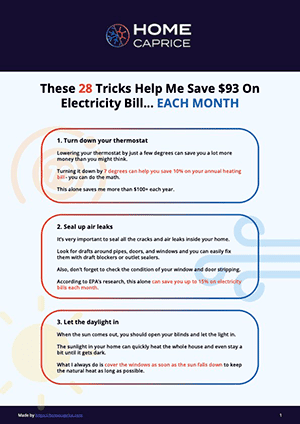First, let’s see several reasons why water heater elements can burn out, and after that, we’ll provide you with a step-by-step guide on how to replace your water heater element.
What Causes Water Heater Elements to Burn Out?
Here are some common causes:
- Sediment Buildup: Over time, minerals and sediment can accumulate at the bottom of the water heater tank. This sediment can cover the heating element, reducing its efficiency and causing it to overheat. The overheating can lead to burnout.
- Hard Water: In areas with hard water (water with a high mineral content), mineral deposits can build up on the heating element. This buildup can insulate the element from the water it’s supposed to heat, causing it to overheat and burn out.
- High Voltage: If there are voltage fluctuations or if the water heater is exposed to a higher voltage than it is designed for, the heating element may burn out. This is why it’s crucial to ensure that the water heater is properly wired and that the voltage supplied is within the specified range.
- Dry Firing: Dry firing occurs when the heating element operates without water. This can happen if the water heater tank is not completely filled with water before turning on the heating element. The lack of water to conduct the heat can cause the element to overheat and burn out.
- Old Age: Like any mechanical or electrical component, water heater elements have a finite lifespan. Over time, they can weaken and become more susceptible to burnout.
- Corrosion: Corrosion can occur on the heating element, particularly in areas with aggressive water conditions. Corrosion can weaken the element, making it more prone to burnout.
- Manufacturing Defects: In some cases, a manufacturing defect in the heating element itself could lead to premature failure. This is relatively rare but can happen.
To prevent water heater element burnout, it’s important to perform regular maintenance, such as flushing the tank to remove sediment, checking for signs of corrosion, and ensuring the correct voltage supply. If you suspect a problem with your water heater, it’s advisable to consult with a professional plumber or electrician for proper diagnosis and repairs.
How to Replace a Water Heater Element? [Step-by-Step]
These are pretty easy to change if you have some mechanical skills.
- First, TURN POWER OFF TO THE WATER HEATER! Flip the breaker and then check with an electrical tester at the water heater to ensure the power is OFF.
- Turn the water off
- Drain the water heater
- Open the access panel
- Disconnect the wires from the element by loosening the Phillips-head screws
- Remove the old element with an element wrench
- Clean up any corrosion or debris on the threads (where you are about to install the new element)
- Put the gasket on the new element
- Install the new element and tighten it with the element wrench
- Close the drain valve and fill the tank with water to check for leaks
- Bleed the air out of the system by opening faucets around the house
- Now you can connect the wires to the element and replace the access cover
- Turn power back ON to the water heater. Make sure the tank is full before turning the power back on
If that sounds complicated, it would be a good idea for you to have an HVAC tech or a plumber out to do the work. You can find a list of local companies at the link HERE.
📍 A tip for old water heaters/hard water: If your water heater is older and has signs of corrosion or hard water, you might have some trouble breaking the seal on the old element (as in, it might be difficult to remove). Before you drain the tank, you can put the wrench on there and break the seal. Don’t turn it too much, or you’ll have a big mess on your hands. Just enough to loosen the element. After that, you can start draining the tank. You’ll have more leverage with a full tank than an empty tank.
Originally this answer was posted by us on Quora here and here.


Download this FREE cheat sheet to find 28 tricks that can help you save on your electricity and heating bill each month.
Click here to get a FREE Cheat-Sheet![How to Drain Your Gas Water Heater? [12 Easy Steps]](https://homecaprice.com/wp-content/uploads/How-to-Drain-Your-Gas-Water-Heater_-12-Easy-Steps_URL-768x432.jpg)
![How To Reset A Tankless Water Heater [4 Easy Steps]](https://homecaprice.com/wp-content/uploads/how-to-reset-tankless-water-heater-768x512.png)
![What Size Water Heater Do You Need? [Quick Answer]](https://homecaprice.com/wp-content/uploads/What-Size-Water-Heater-Do-You-Need_-Quick-Answer_URL-768x432.jpg)